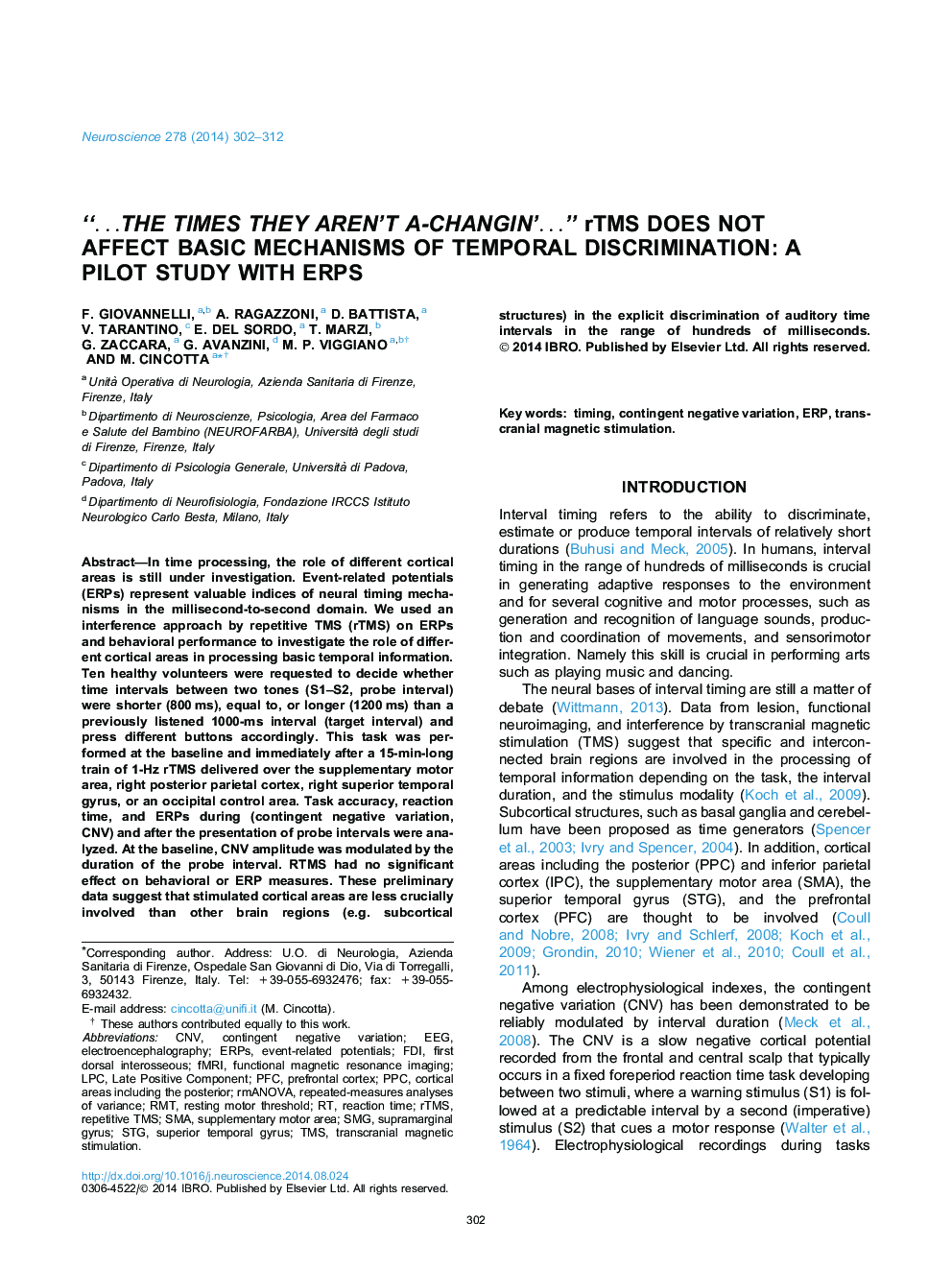| کد مقاله | کد نشریه | سال انتشار | مقاله انگلیسی | نسخه تمام متن |
|---|---|---|---|---|
| 6273760 | 1614798 | 2014 | 11 صفحه PDF | دانلود رایگان |

- We used rTMS to test the role of different cortical areas in a time discrimination task.
- SMA, right posterior parietal cortex and superior temporal gyrus were stimulated.
- At the baseline, CNV amplitude was modulated by the duration of the probe interval.
- No significant effect of rTMS was found on behavioral performance or ERP components.
- Other brain regions (non-cortical) may be more crucially involved in time processing.
In time processing, the role of different cortical areas is still under investigation. Event-related potentials (ERPs) represent valuable indices of neural timing mechanisms in the millisecond-to-second domain. We used an interference approach by repetitive TMS (rTMS) on ERPs and behavioral performance to investigate the role of different cortical areas in processing basic temporal information. Ten healthy volunteers were requested to decide whether time intervals between two tones (S1-S2, probe interval) were shorter (800Â ms), equal to, or longer (1200Â ms) than a previously listened 1000-ms interval (target interval) and press different buttons accordingly. This task was performed at the baseline and immediately after a 15-min-long train of 1-Hz rTMS delivered over the supplementary motor area, right posterior parietal cortex, right superior temporal gyrus, or an occipital control area. Task accuracy, reaction time, and ERPs during (contingent negative variation, CNV) and after the presentation of probe intervals were analyzed. At the baseline, CNV amplitude was modulated by the duration of the probe interval. RTMS had no significant effect on behavioral or ERP measures. These preliminary data suggest that stimulated cortical areas are less crucially involved than other brain regions (e.g. subcortical structures) in the explicit discrimination of auditory time intervals in the range of hundreds of milliseconds.
Journal: Neuroscience - Volume 278, 10 October 2014, Pages 302-312